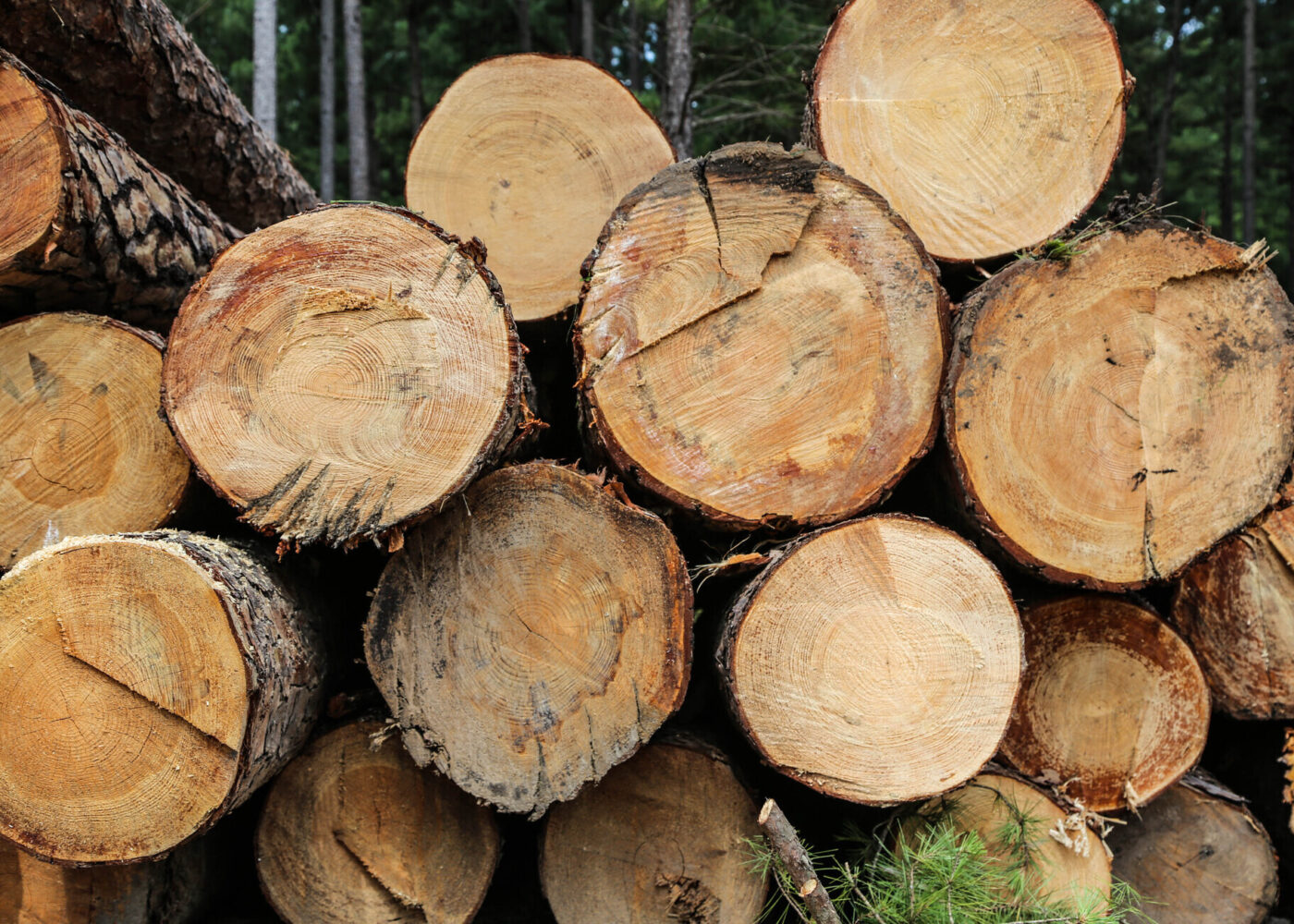Texas forests are managed to supply wood for an array of goods and products. The forest products industry is a vital part of the Texas economy. Generating billions of dollars in direct and indirect impact and thousands of jobs.
We search for new opportunities in the existing forest industry and emerging markets. We also assist landowners, manufacturers, distributors, and the public on topics related to the use of wood in urban and rural settings and marketing of wood products.
Emerging markets
Emerging markets in the forest products sector is one are we focus on. These innovative technologies provide landowners with an outlet for their timber and for people throughout the state to interact with wood in new ways. Some emerging markets include:
Mass timber
A group of engineered wood products that allow for the use of wood where only steel and concrete were previously used.
Typically used in multi-family buildings, office spaces, and educational buildings, mass timber has the ability to leave exposed wood which provides a warm feel to any building. Mass timber includes cross-laminated timber (CLT), glue-laminated timber (glulam), and many others.
Biochar
Biochar is a charcoal-like substance that has numerous applications, and more are ready once markets are realized.
Biochar is made through a process called pyrolysis, or burning in the absence of oxygen, and can be made using any number of raw materials. Wood provides a feedstock that is high volume and readily available.
It’s used as a soil amendment to enhance water retention, a filler in construction materials, and as an environmental remediation tool. All while serving as a carbon sink.
Renewable fuels
Wood truly is the most renewable and sustainable resource we have, and it has the ability to reduce carbon emissions in traditional areas such as fuel. Renewable fuels include bioenergy pellets for heating and electricity, biodiesel, and sustainable aviation fuel.
BTU of woody biomass
When biomass is used as fuel, the usable heat energy obtained is dependent on a property called heat of combustion. Heat of combustion is the amount of heat that results from the complete combustion of the material.
Values are commonly expressed in British thermal units per oven dry pound (Btu/OD lb.) of material. Below shows the heat of combustion values for southern yellow pine, mesquite, Chinese tallow and juniper.
Heat of combustion
| Species | Tissue Type | Average | Range |
|---|---|---|---|
| Southern Yellow Pine | Wood | 8600 | — |
| — | Bark | 8900 | — |
| Mesquite (Prosopis sp.) | Heartwood | 8657 | 8469-9079 |
| — | Sapwood | 8021 | 7907-8235 |
| — | Bark | 7836 | 7043-8176 |
| — | Stem and leaves | 8123 | 7846-8222 |
| Chinese tallow (Sapium sebiferum (Roxb.)) | Wood | 7586 | 7226-7835 |
| Juniper (Juniperus spp.)5 | Mixed6 | 88497 | — |
Heat of combustion of 22 species
| Species2 | Stem (Wood) | Stem (Bark) | Branch (Wood) | Branch (Bark) |
|---|---|---|---|---|
| Green ash | 7695 | 7472 | 7727 | 7606 |
| White ash | 8033 | 7695 | 8013 | 7816 |
| American elm | 7770 | 6840 | 7857 | 6904 |
| Winged elm | 7917 | 7019 | 7869 | 6889 |
| Hackberry | 7882 | 7147 | 7867 | 7141 |
| Hickory | 8183 | 7586 | 7931 | 7259 |
| Red maple | 7846 | 7595 | 7829 | 7384 |
| Black oak | 7680 | 7642 | 7690 | 7847 |
| Blackjack oak | 7739 | 7766 | 7739 | 7907 |
| Cherrybark oak | 7848 | 7582 | 7737 | 7655 |
| Laurel oak | 7828 | 7897 | 7653 | 7806 |
| Northern red oak | 7791 | 7879 | 7776 | 7926 |
| Post oak | 7889 | 7191 | 7845 | 7728 |
| Scarlet oak | 7798 | 8041 | 7673 | 7894 |
| Shumard oak | 7789 | 7970 | 7745 | 7913 |
| Southern red oak | 7919 | 7983 | 7839 | 7798 |
| Water oak | 7876 | 7930 | 7833 | 7918 |
| White oak | 7676 | 7328 | 7507 | 7574 |
| Sweetbay | 7736 | 7822 | 7802 | 7886 |
| Sweetgum | 7667 | 7200 | 7690 | 7214 |
| Black tupelo | 7867 | 7788 | 7814 | 8176 |
| Yellow-poplar | 7774 | 7696 | 7811 | 7666 |

